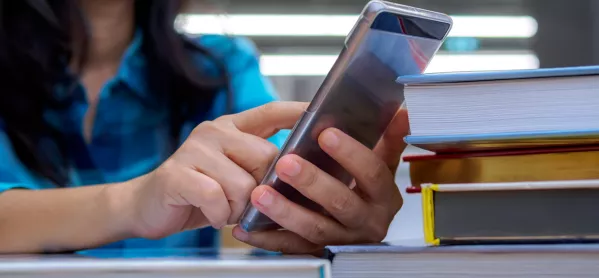- Home
- NHS Covid-19 app: 5 things teachers need to know
NHS Covid-19 app: 5 things teachers need to know

The government has released new guidance on how teachers and students should use the NHS Covid-19 app to help prevent the spread of the disease.
According to Department for Education (DfE) guidance published today, the app - which should only be used by those aged 16 and over - is designed to “complement” the existing Test and Trace system, not replace it.
As such, the guidance states that the app has six key features:
- Trace - alerts the individual if they were in close contact with a confirmed case.
- Alert - provides the individual with the risk level associated with the coronavirus in their local area, based on the postcode district they enter.
- Check in - allows the individual to check in to locations via the app and official NHS QR codes.
- Symptoms - allows the individual to check symptoms against government guidance and to get advice.
- Test - allows the individual to order a free test and to receive results and advice via the app.
- Isolate - provides an isolation “companion”, which counts down how many days they have left to isolate.
For the app to work, the phone must be switched on and Bluetooth enabled.
Attendance: Around 1,000 schools not fully open last week, says DfE
Priority: Teachers fifth in line to get coronavirus tests
Coronavirus: Teachers denied testing for ‘not being key workers’
Here are the key things teachers need to know about how and when to use the app:
Coronavirus: How schools should use the app
1. Schools can ‘recommend’ that staff download the app
The guidance does not state that the app will be mandatory for anybody.
However, it does specify that schools can “recommend that staff download and use the app, if they think this would be beneficial”.
2. There are only three situations when tracing should be paused
It is possible to pause the app’s “trace” function, which means the phone and Bluetooth remain on but contacts are not recorded.
This is only appropriate in three situations, according to the DfE:
- When someone is not able to have their phone with them, for example because it is stored in a locker or communal area - this is to avoid the app picking up contacts when the user is not with their phone.
- When someone is working behind a perspex (or equivalent) screen, fully protected from other colleagues and members of the public, as they are considered to be adequately protected from contracting the coronavirus.
- In a health or care setting where staff are wearing medical-grade personal protective equipment (for example, a surgical mask) as these individuals are also considered to be adequately protected.
3. Schools may wish to adapt their mobile phone policies...
The new guidance says there are “likely to be benefits” to schools if “a number of students and staff have the app and make use of it during the day”.
So, while there is no requirement for schools to change their mobile phone policies, they “may want to do so” if they do not currently allow phones on site, or require them to be switched off or left in lockers during the day.
“This is because the information it provides may help to limit the number of other students and staff who are required to self-isolate when there is a positive case,” the department says.
The guidance adds: “Settings choosing to allow mobile phones to be switched on and with students during the day can still require phones to be on silent and in pockets or bags that are with the student at all times, as the app will work in the background.”
4. ...and behaviour policies
Schools may also wish to rethink their behaviour policies, the DfE says, including whether it remains appropriate to confiscate phones if a student has the app.
“If phones are confiscated, staff should ask students with the app to pause contact tracing before the phone is removed,” the department says.
Schools may wish to make clear at which points it is appropriate for students to check their phone for notifications, and how intentional misuse of the app (such as logging symptoms they do not have in order to receive a recommendation to go home and self-isolate) or checking the app during lessons will be handled.
5. It’s not for under-16s - but take note if they receive an alert
“It is also possible that younger students will use the app despite the lower age limit being 16,” the DfE says.
“Settings should make clear to those students, and if necessary parents, that use of the app is not recommended for students younger than 16.
“However, should a student below the age of 16 use the app and receive a notification that they have been in contact with a positive case, the setting should follow their usual process.”
Keep reading for just £1 per month
You've reached your limit of free articles this month. Subscribe for £1 per month for three months and get:
- Unlimited access to all Tes magazine content
- Exclusive subscriber-only stories
- Award-winning email newsletters



